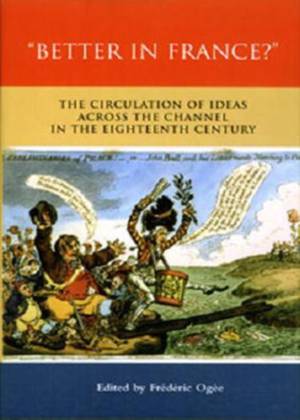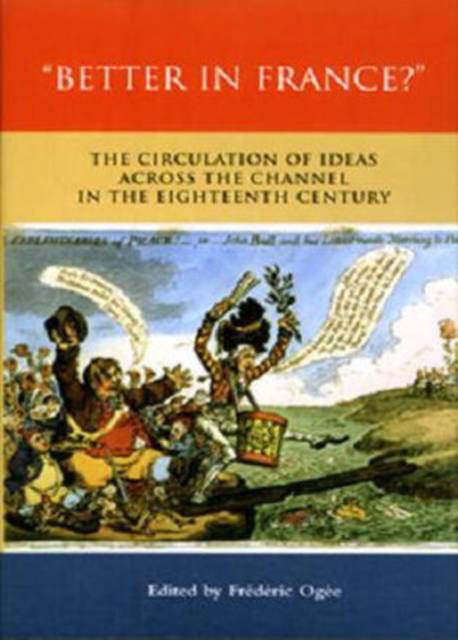
- Afhalen na 1 uur in een winkel met voorraad
- Gratis thuislevering in België vanaf € 30
- Ruim aanbod met 7 miljoen producten
- Afhalen na 1 uur in een winkel met voorraad
- Gratis thuislevering in België vanaf € 30
- Ruim aanbod met 7 miljoen producten
Zoeken
'Better in France?'
The Circulation of Ideas Across the Channel in the Eighteenth Century
€ 79,95
+ 159 punten
Omschrijving
This book discusses the way ideas and forms traveled between Britain and France during the eighteenth century, and the extent to which the circulation of ideas between the two countries could be difficult. The volume shows that this difficulty, because it was acknowledged and often thematized, contributed to an increased awareness of what was really at stake in the very concept of Enlightenment. The examination of points of contact between the two cultures - contacts that became very much the fashion in the course of the eighteenth century - helps us understand how apparently common concepts and concerns fared differently from one country to the next, while being enriched by those contacts. The conversation of aesthetic theories and artistic forms of expression between the two countries sheds interesting light on the overall confrontation of conflicting theories of power and control that expressed themselves throughout the period of complete political redistribution. The ways myths and stories, forms and theories, traveled and changed currency gives us a clearer political grasp on the whole history of exchanges, as writers and artists, encouraged or irritated by the new myth of Progress, kept putting forward nothing else but models and strategies of public and private political economy.
Specificaties
Betrokkenen
- Uitgeverij:
Inhoud
- Aantal bladzijden:
- 298
- Taal:
- Engels
- Reeks:
Eigenschappen
- Productcode (EAN):
- 9781611482188
- Verschijningsdatum:
- 1/09/2005
- Uitvoering:
- Hardcover
- Formaat:
- Genaaid
- Afmetingen:
- 167 mm x 247 mm
- Gewicht:
- 614 g

Alleen bij Standaard Boekhandel
+ 159 punten op je klantenkaart van Standaard Boekhandel
Beoordelingen
We publiceren alleen reviews die voldoen aan de voorwaarden voor reviews. Bekijk onze voorwaarden voor reviews.










